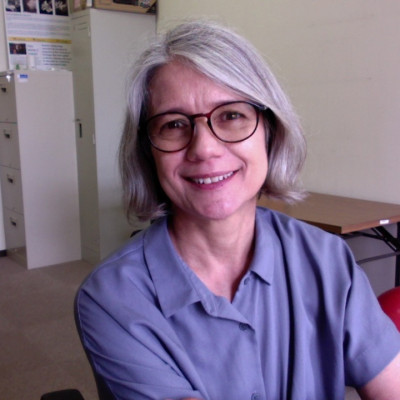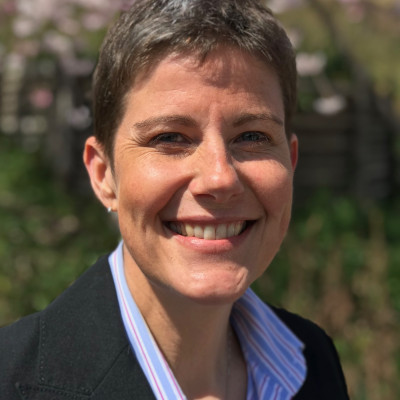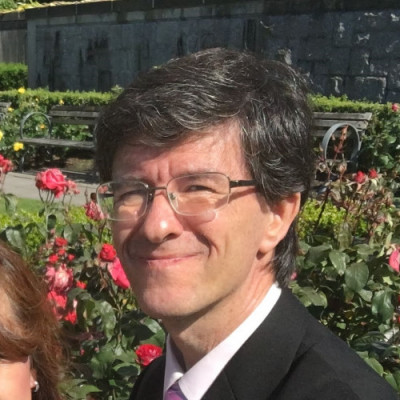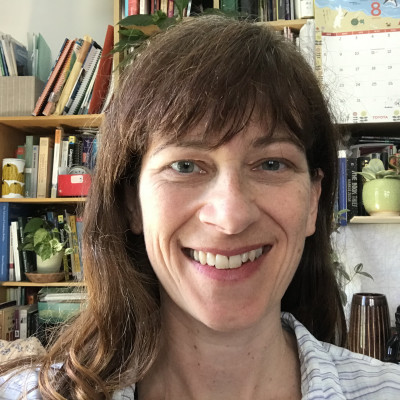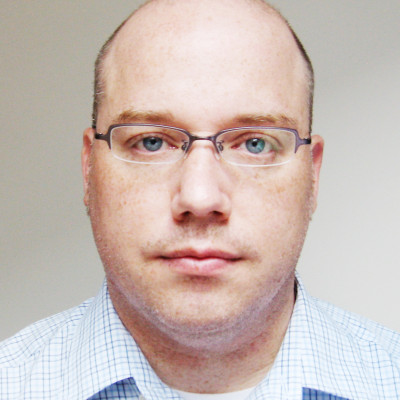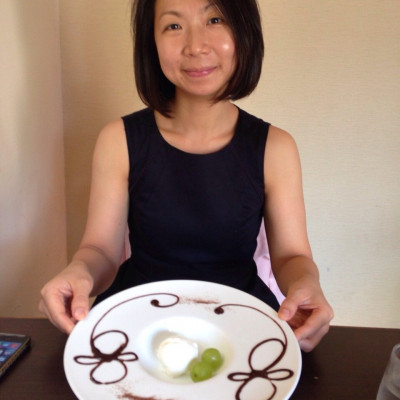Sessions / Location Name: E22
Physical Location
Location: E22
Building: Miwa Campus Building < The University of Nagano
Language Learning COILs: A Pilot Study #2865
Collaborative Online International Learning (COIL) and Language Learning COILs (LLCs) provide opportunities for students to communicate with students from other countries learning the same L2, to communicate with native speakers of the L2, and to develop cultural awareness and understanding. The COVID-19 pandemic has hastened awareness and understanding of how important and useful COIL might be in education. This presentation will report on the outcomes of a LLC held in the fall of 2021 between a English Communication class for first year Japanese university students and a 2nd year Japanese language class at a college in the United States. After a brief outline of the LLC’s content and procedure, I will review the results of a post-LCC questionnaire given to the Japanese students. Results of this pilot study show that students had positive responses to the LCC, and indicated increases in motivation to study abroad, awareness of cultural differences between Japanese and American university students, and participation in regular English classes. The data related to perceived language ability and confidence in using the language is inconclusive and merits further investigation. This presentation might be of interest to any instructor interested in Language Learning COILs.
Filling Gaps in the English Curriculum with Self-Access Learning Initiatives #2838
Classroom-based language curricula are necessarily “one size fits all”, leading to potential gaps which self-access language learning can address through resources suited to individual learning goals. Moreover, centres can become social communities in which users learn from each other (Mynard, 2019). Through dialogue with learners and faculty, gaps in the English curriculum were identified and initiatives developed within our tight budgetary constraints. The questions that guided the development of our self-access centre were: 1. Why do many CEFR (pre-)A1 level learners rarely visit the teacher-run conversation lounge and what can be done to encourage their participation? 2. How can value be added for bicultural and “returnee” learners who are not well-served by required English classes? 3. What can be done to support the 10-15% of students in the English Department who choose to write their graduation thesis in English, considering their numbers are judged insufficient for a dedicated advanced academic writing class? Details will be provided of ongoing initiatives to encourage participation of lower-level students, involve bicultural and returnee students as active stakeholders, and provide writing support without a writing centre. In addition, presenters will invite ideas from the audience to address these common issues through autonomous learning.
Understanding the Process of Generating Text in Academic Writing - A Student Case Study #2742
Mastering academic writing is one of the biggest challenges for tertiary level students. Whilst classroom instruction may provide guidance in how to properly construct an essay or research paper, the actual process of writing is one that many students find disorientating. Likewise, once submitted, educators are often left bewildered as to how their teachings so comprehensively failed to be translated into a competent piece of writing. The problem for both parties is that in many cases the most significant moment of the writing process is one the students have received no direction on -- how to actually move between ideas and text generation. Collins and Gentner (1980) claimed it was important to separate idea production from text production with the key component focussed on identifying movement between the ‘content space’ and the ‘rhetorical space’. This applies at both a sentence-construction and paragraph-assembly level. Through the use of Think Aloud Protocols, this presentation will look at how a freshman student navigates moving between her ideas and converting that into text and what writing instructors can learn from this crucial moment of the writing process.
From zero to sixty in 800 words: A first-year university writing program #2855
There are various metrics one can use when comparing cars: fuel efficiency, seating capacity or even speed. For true car enthusiasts, how quickly a car can accelerate from a standstill to the desired cruising speed of sixty miles an hour is often the most important factor. Like a car, how quickly a university writing program can get students up to speed is also a vital measure of success. This presentation will describe the first year of a successful writing program implemented in the English Department of a Japanese private university. All students must complete an 8,000-word graduation dissertation. Unfortunately, many students have had very little experience with English writing beyond sentence-level translations or journal entries before entering university. While academic writing is formally introduced in the second year, this presentation will detail how the steps taken in the first year prepare the students by getting them up to speed as quickly as possible for the increasingly demanding requirements they will encounter in the years that follow. Initially, some information will be given about the current state of writing education in Japanese high schools, before explaining the theory and practical applications of this successful program.
The Importance of the L2 Corpora for Material Development #2834
Most materials developed for EFL learners use corpora derived from L1 texts to help identify what vocabulary and expressions learners need to know (Lee et al., 2019; Verspoor et al., 2012). However, this is problematic because the vast lexicon of the L1 speaker is nearly unattainable for most L2 learners (Hou et al., 2016; Sinclair, 2004). The presentation demonstrates how L2 corpora can be used to help bridge this gap and develop materials for L2 learners based on learners’ backgrounds and needs.
To do this, the presenters will describe the development and use of a large-scale longitudinal corpus consisting of texts collected from first-year Japanese university students (n = 500) at multiple points of time and across different modes of production: academic writing, academic presentations, and academic discussions. They will show how the data from this corpus was correlated to demographic and linguistic information gathered from each participant to help identify the lexical needs of specific groups and, how this information was used to develop materials for different proficiency levels and for different tasks. Finally, they will give examples of how these materials, and the process used to create them, could be adapted to other contexts.
The genre and discovery learning approach to teaching and assessing writing #2890
The process approach (Taylor, 1981; Zamel, 1982; Raimes, 1983) is the most commonly used approach to teaching writing. Since the approach covers from brainstorming to composing, it allows teachers to participate and give feedback in the writing process as a reader, before switching back to their role as a grader. However, it is debatable how much it benefits students, as it lacks focus on a particular skill (content, organization and coherence, language, or writing style). This is notably valid with upper-intermediate or higher proficiency English learners, who tend to be weaker in just one or two aspects, but not all. This workshop will focus on applying the genre approach (Hyland, 2002) with application of the discovery learning method and collaborative writing, to the existing process approach. By minimizing lecturing (where students discover the conventions and linguistic features with the teacher’s guidance) and maximizing peer learning (with more scaffolding than the process approach), students write as a group, receive instant feedback in a class, and eventually work individually. It is an approach addressing all skills step-by-step when teaching half/ one term with blended learning. Lesson plans and sample teaching materials will be provided as examples.
How to set up and run a multinational online SOLE session #2872
Self Organized Learning Environments (SOLEs) are brief, intense, enjoyable examples of Problem Based Learning (PBL). Characterized by a lack of teacher-involvement, SOLEs are known as “minimally invasive education.” The teacher’s role is marginalized to facilitator. Sessions have 3 phases. First, the facilitator poses a challenging problem, known in SOLEs as a "Big Question", following which, the session is entirely student-centered. Second, the students work in groups searching the Internet for possible solutions. Third, the students present their findings. In an English Language Learning (ELL) context, the presentations are in the target language, and the facilitator may provide language instruction. The method can be effectively adapted for multinational online collaborations, where students from several countries form diverse communities of practice in breakout rooms. This is an opportunity for communication in the target language and also for learning content related to the Big Question. There are, however, pitfalls in this type of session that can detract from the experience. For example, some students might have poor internet connections, or students might need assistance but lack the language ability to ask. In this presentation, you will learn how to set up and run multinational online SOLEs that are fun and, as far as possible, problem-free.
Teaching the L2 Learner What "They" Want and Need: Japanese University Students’ Exposure to and Attitudes toward Singular They #2712
Singular they (ST) is a generic third-person singular pronoun, as in the sentence “If a student comes, give them a handout.” ST is a well-established part of the English lexicon endorsed by many dictionaries, style guides, and universities, and is the generic pronoun of choice by native English speakers in many contexts (rather than generic he or he/she). However, ST’s acceptance among L2 English speakers varies more widely, influenced by factors such as the amount of exposure to natural English and the socio-linguistics of the L1 language and culture. This exploratory study examines the exposure to and attitudes toward ST by 55 Japanese university students of low-intermediate English proficiency. Results indicate that although participants believed ST to be useful, many also held negative perceptions of it, which seemed to stem mainly from lack of exposure and from grammatical beliefs that conflicted with ST. Despite this, many noted its potential to decrease gender bias, and 74% said they wanted to try using ST more. These results point to a need in Japanese EFL classrooms and textbooks to incorporate ST instruction to match the recommendations of style guides and to reflect the natural transitions in the English language.
Critical pedagogy in ELT: A possible post-pandemic panacea? #2828
Since the onset of Covid-19, government decision-making has significantly affected Japanese universities, their education policies and inevitably English language teachers’ and learners’ lives. Hence, it has provided opportunities to contemplate how the English language classroom has been in light of changes teachers and learners have had to make, and how it could be. As such, these point to a need to envision the future classroom as a place for teachers and learners to make sense of and develop from their experiences. One approach that can help with this is critical pedagogy—the process of critiquing structures of power and oppression that manifest in the classroom. Indeed, as all education is arguably political and higher education is not just in society but supposedly for it, critical pedagogy offers a practical and relevant way to reconstitute the English language classroom via the problematising of current and historical educational contexts and practices. Consequently, this presentation discusses research that used critical pedagogy to understand one English language classroom of the pandemic via a teacher’s and his learners’ responses to such ‘lived’ conditions before utilising these to (re)imagine the classroom post-pandemic with implications for their empowerment and transformation for the greater good.
Effects of weekly explicit grammar instruction on L2 speaking development #2825
This presentation talks about the effects of giving weekly explicit grammar instruction to learners to examine changes in their speaking output over time. Task-based language teaching (TBLT) has flourished in the past several decades as an effective approach for developing speaking proficiency. While TBLT research has recognized the importance of integrating form-focused instruction (FFI) into meaningful tasks (Long, 2015), the effects of grammar instruction on speaking proficiency development, especially over time, remain unclear. Three first-year Japanese university students participated in this classroom-based study for seven weeks. Pretest and posttest were conducted one week before and one week after a seven-week intervention period. During intervention, all three participants received weekly grammar instruction given by the presenter. Each week, they were given 10 minutes of grammar instruction on past tense forms before they narrated a different four-picture cartoon in English (equivalent difficulty level). Narrations produced by the participants were recorded, transcribed and analyzed. Trajectory changes in their speaking output were qualitatively analyzed in terms of complexity, accuracy, and fluency. This presentation concludes with some pedagogical implications for integrating grammar instruction into communicative language teaching classrooms.
Issues of tourism in Kyoto taught through content-based instruction #2953
Tying language learning to topics that students can relate to in their daily lives while using authentic material leads to more engaged learners. The authors used interviews in English with local foreign tour guides in Kyoto as source content material for listening and reading comprehension to teach a unit on tourism and its impact on local communities. This was supplemented by further socio-economic data and information related to Kyoto’s tourism industry created and curated by the authors. Students were able to discuss and debate the merits and demerits of mass tourism, consider the effects of the COVID-19 pandemic on this industry, and, as a final project, propose a suggested plan of action to promote or manage tourism industry in the local area. This presentation will look at how the presenters utilised the CBI method to help students learn about social and economic issues through the vehicle of English as a medium of instruction. This presentation will go through the methods and materials as well as student feedback from the tasks and project that they accomplish. It will also propose ways to adapt the method to topics of personal relevance to the attendees and their students. The materials are original materials that the presenters have gathered through their own socio-economic research within Kyoto. These issues are taught through the materials in the students target language and then the students are given projects to work on. This presentation will go through the methods and materials as well as student feedback from the tasks and project that they accomplish.
The effect of timed writing on L2 writing: a mixed methods study #2709
The importance of L2 writing development has continued to generate ongoing interest as evidenced by numerous publications over the past few decades (Fogal & Verspoor, 2020; Larsen-Freeman, 2006; Wolfe-Quintero, Inagaki & Kim, 1998). However, very little of this research has focused on the effect of specific practice tasks on learners’ development in the classroom. The presenters will share the results of a mixed-methods study investigating the effects of different types of writing practice on the development of complexity, accuracy, and fluency (CAF) in the writing of Japanese university students. Three groups who received regular practice in either sentence-combining, translation, or timed writing were compared on measures of CAF across one semester. The researchers will focus particularly on the results of the timed-writing group, who made significant gains across time and compared to other groups in the study on the measure of fluency. Furthermore, qualitative data will be shared illuminating why timed-writing was a more engaging task for learners as well as the strategies learners employed while performing the task. The findings from the study will be discussed in terms of pedagogical implications for L2 writing instructors.
